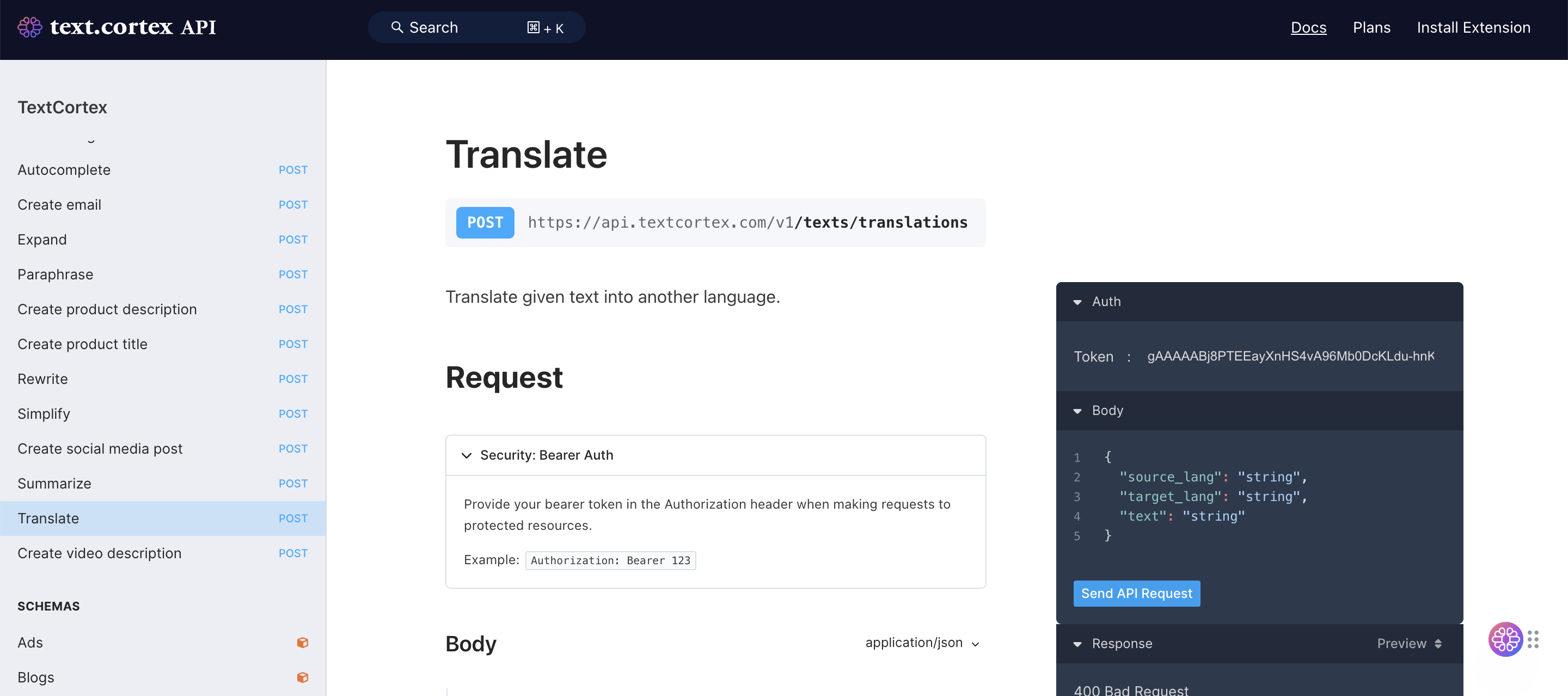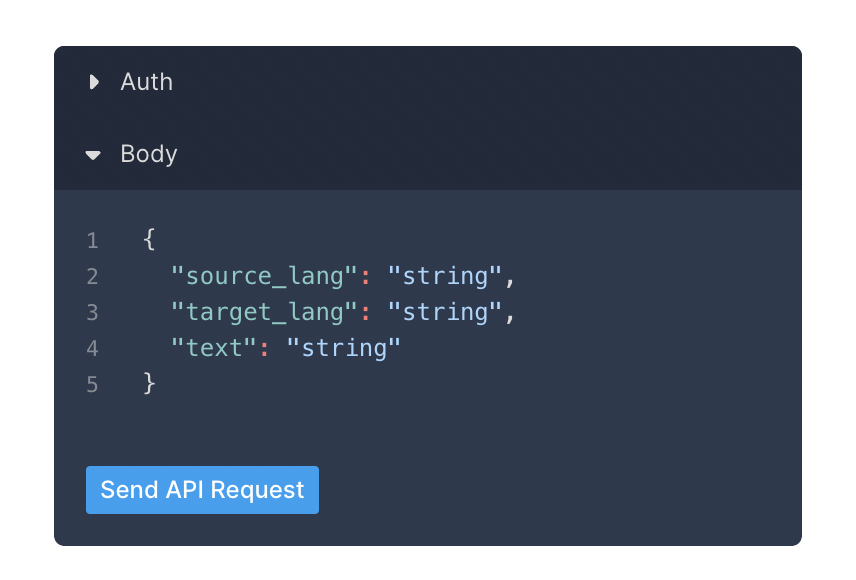NLP is the foundation of many everyday tools that many of us use. A few examples are AI language translation tools which employ NLP to convert written or verbal words from one source language into a different target language.
How Do Translation APIs Work?
Translation APIs have become necessary for companies as their products or apps are used by people from various backgrounds. Additionally, businesses make use of these converted texts for other Natural Language Processing (NLP) applications such as sentiment analysis, promotion and virtual assistants.
Therefore, developers usually struggle with creating websites that can translate text between different languages. Thankfully, there are some APIs that can help to conquer this problem. NLP Translation API is an example of such a tool that has the ability to quickly translate text into another language.
Deep Learning Natural Language Processing Techniques for Advanced Translation
Recent developments in deep learning have enabled more sophisticated translation than ever before; for instance, services like Google Translate have been around for quite some time but the output was never completely accurate.
Deep learning Natural Language Processing models have made translation incredibly smooth. It is difficult to distinguish translations performed by a machine, even when it comes to complex technical topics.
Why Use Automatic Translation?
The potential uses for automatic translation are limitless, but here are two examples:
Multilingual Support
Rather than neglecting non-English speakers and potentially missing out on customers, why not automate translations for all conversations?
Multilingual Marketing
Having only English content when targeting multiple countries is not ideal. Customers generally prefer to access information about your business in their native language. This is also a great way to increase search engine optimization. Taking advantage of machine translation technology is an effective way to draw in more customers.
TextCortex’s NLP API for Translation
If you're looking for a translation API powered by NLP infrastructure that you can straight integrate into your existing software architecture, please be our guest, grab yourself a drink and check out our Translation API.

Our Documentation: https://docs.textcortex.com/api/paths/texts-paraphrases/post
API Overview: https://textcortex.com/text-generation-api
Sign up and get instant free credits to try our API. (Go to your Account Settings to generate your API Key after you've logged in.)
How does our Translation API work?
Once you are connected to our API, you need to send a request just as in the following example:

We support more than 25+ languages that you can use in your translations. Here is the definition of required fields:
source_lang: string
Definition: The language of the text to translate.
Available options are:
- "en": English (Default)
- "auto": The API will attempt to detect the language of the text and translate it.
- "bg": Bulgarian
- "cs": Czech
- "da": Danish
- "de": German
- "el": Greek
- "es": Spanish
- "et": Estonian
- "fi": Finnish
- "fr": French
- "hu": Hungarian
- "id": Indonesian
- "it": Italian
- "ja": Japanese
- "ko": Korean
- "lt": Lithuanian
- "lv": Latvian
- "nb": Norwegian
- "nl": Dutch
- "pl": Polish
- "pt": Portuguese (all Portuguese varieties mixed)
- "ro": Romanian
- "ru": Russian
- "sk": Slovak
- "sl": Slovenian
- "sv": Swedish
- "tr": Turkish
- "uk": Ukrainian
- "zh": Chinese
target_lang: string
required
Definition: The language to translate to.
Available options are:
- "bg": Bulgarian
- "cs": Czech
- "da": Danish
- "de": German
- "el": Greek
- "en": Alias for en-us
- "en-gb": English (British)
- "en-us": English (American)
- "es": Spanish
- "et": Estonian
- "fi": Finnish
- "fr": French
- "hu": Hungarian
- "id": Indonesian
- "it": Italian
- "ja": Japanese
- "ko": Korean
- "lt": Lithuanian
- "lv": Latvian
- "nb": Norwegian
- "nl": Dutch
- "pl": Polish
- "pt": Alias for pt-pt
- "pt-br": Portuguese (Brazilian)
- "pt-pt": Portuguese (all Portuguese varieties excluding Brazilian Portuguese)
- "ro": Romanian
- "ru": Russian
- "sk": Slovak
- "sl": Slovenian
- "sv": Swedish
- "tr": Turkish
- "uk": Ukrainian
- "zh": Chinese (simplified)
text: string
required
Definition: The text to translate.
Let's say you have the following block of text in source_lang “auto”:
Generative Pre-trained Transformer 3 (GPT-3) is an autoregressive language model released in 2020 that uses deep learning to produce human-like text. Given an initial text as a prompt, it will produce text that continues the prompt.
It will analyze the text, find out the source_lang and will translate that into the target_lang you set in the request. The very API response in action for Simplified Chinese (“zh”) would be:
生成预训练转化器3(GPT-3)是2020年发布的一个自回归语言模型,使用深度学习来产生类似人类的文本。给定一个初始文本作为提示,它将产生延续提示的文本。
Sign up and get instant free credits to try our API. (Go to your Account Settings to generate your API Key for free after you've logged in. We give $5 credits.)

%20(20).png)
%20(7).png)
%20(6).png)
%20(5).png)